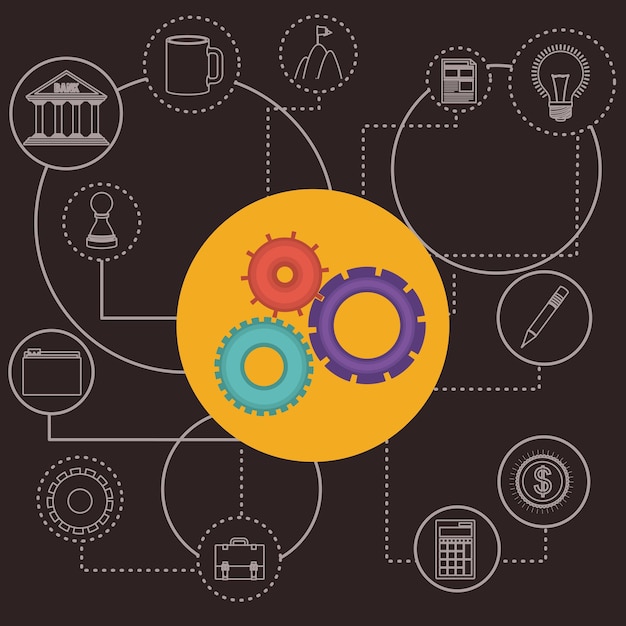Unlock Tax-Advantaged Savings: Boost Retirement & Minimize Taxes

Tax-advantaged savings offer a strategic way to maximize retirement contributions while minimizing your current and future tax burden, allowing for exponential growth and greater financial security in retirement.
Navigating the world of retirement planning can be complex, but understanding tax-advantaged savings is crucial for building a secure financial future. Tax-advantaged savings provide a powerful way to grow your wealth while reducing your tax liability.
Understanding Tax-Advantaged Savings Accounts
Tax-advantaged savings accounts are investment accounts that offer specific tax benefits, encouraging individuals to save for retirement and other long-term goals. These accounts can significantly reduce your tax liability, allowing your savings to grow faster.
Types of Tax-Advantaged Accounts
Several types of tax-advantaged accounts are available, each with its own rules and benefits. Understanding these differences is key to choosing the right account for your needs.
Contribution Limits and Eligibility
Each tax-advantaged account has specific contribution limits and eligibility requirements that you need to be aware of to maximize your savings and avoid penalties.
- 401(k) Plans: Offered through employers, these plans allow pre-tax contributions, lowering your current taxable income.
- Individual Retirement Accounts (IRAs): Traditional and Roth IRAs provide different tax advantages for retirement savings.
- Health Savings Accounts (HSAs): HSAs are designed for healthcare expenses and offer a triple tax advantage.

By understanding the various types of tax-advantaged accounts and their unique benefits, you can make informed decisions to optimize your retirement savings strategy.
The Power of Pre-Tax Contributions
Pre-tax contributions are a cornerstone of many tax-advantaged savings plans. This means that the money you contribute is deducted from your taxable income, reducing the amount of taxes you pay in the current year.
How Pre-Tax Contributions Work
When you make pre-tax contributions, you’re essentially deferring the payment of taxes until retirement. This can lead to significant tax savings over time.
Benefits of Lowering Current Taxable Income
Reducing your current taxable income can have several advantages, including potentially moving you to a lower tax bracket and increasing your take-home pay.
- Immediate Tax Relief: Lower your taxable income and reduce your tax bill for the current year.
- Increased Savings Potential: More of your money goes towards savings rather than taxes.
- Compound Growth: Earnings grow tax-deferred, allowing for greater long-term accumulation.
Pre-tax contributions are a powerful tool for reducing your current tax burden and maximizing your retirement savings potential.
Understanding Roth vs. Traditional Accounts
When it comes to tax-advantaged savings, understanding the difference between Roth and Traditional accounts is essential. Each offers unique tax benefits depending on your financial situation and goals.
Key Differences Between Roth and Traditional
The primary difference lies in when you pay taxes: Roth accounts tax money up front, while Traditional accounts defer taxes until retirement.
Choosing the Right Account for Your Situation
Factors such as your current income, expected future income, and risk tolerance should all be considered when choosing between Roth and Traditional accounts.
- Roth Accounts: Pay taxes now, enjoy tax-free withdrawals in retirement.
- Traditional Accounts: Defer taxes until retirement, potentially reducing your current tax burden.
- Tax Implications: Understand the tax implications of each type of account for your specific situation.
Carefully evaluating the differences between Roth and Traditional accounts can help you choose the best option for your financial future.
Maximizing Contributions to Retirement Plans
One of the most effective ways to boost your retirement savings is to maximize your contributions to available retirement plans. Taking full advantage of contribution limits can significantly impact your long-term financial security.
Taking Advantage of Employer Matching
If your employer offers matching contributions, it’s crucial to take full advantage of this benefit, as it’s essentially free money towards your retirement.

Strategies for Catch-Up Contributions
For those aged 50 and older, catch-up contributions allow you to contribute even more to your retirement accounts, helping you make up for lost time.
- Employer Match: Always contribute enough to get the full employer match.
- Contribution Limits: Stay informed about annual contribution limits for each type of account.
- Catch-Up Contributions: If you’re 50 or older, take advantage of catch-up contributions.
By maximizing your contributions and taking advantage of employer matching programs, you can accelerate your retirement savings and build a more secure financial future.
Health Savings Accounts (HSAs) for Retirement
Health Savings Accounts (HSAs) are not just for healthcare expenses; they can also be a powerful tool for retirement savings. HSAs offer a unique triple tax advantage, making them an attractive option for long-term financial planning.
The Triple Tax Advantage of HSAs
Contributions to HSAs are tax-deductible, earnings grow tax-free, and withdrawals for qualified medical expenses are also tax-free.
Using HSAs for Healthcare Expenses in Retirement
Healthcare costs can be a significant expense in retirement, and HSAs can provide a tax-advantaged way to cover these costs.
- Tax Deductible Contributions: Reduce your taxable income by contributing to an HSA.
- Tax-Free Growth: Earnings in the HSA grow tax-free.
- Tax-Free Withdrawals: Use the money for qualified medical expenses tax-free.
Considering HSAs as part of your retirement savings strategy can provide significant tax advantages and help you manage healthcare expenses in retirement.
Tax-Efficient Withdrawal Strategies
While accumulating tax-advantaged savings is important, it’s equally crucial to have a tax-efficient withdrawal strategy in retirement. How you withdraw your savings can significantly impact your tax liability and overall financial security.
Planning for Tax-Efficient Withdrawals
Creating a plan for tax-efficient withdrawals involves considering the types of accounts you have, your tax bracket in retirement, and your spending needs.
Strategies to Minimize Taxes in Retirement
Strategies such as Roth conversions, tax-loss harvesting, and strategic asset allocation can help minimize your tax burden in retirement.
- Roth Conversions: Convert traditional IRA funds to a Roth IRA to pay taxes now and avoid them later.
- Tax-Loss Harvesting: Offset capital gains with capital losses to reduce your tax liability.
- Asset Allocation: Strategically allocate assets across different account types to minimize taxes.
Implementing tax-efficient withdrawal strategies can help you preserve more of your savings and enjoy a more financially secure retirement.
| Key Point | Brief Description |
|---|---|
| 💰 Pre-Tax Contributions | Lower taxable income now; pay taxes later. |
| 📊 Roth vs. Traditional | Choose based on current vs. future tax rates. |
| ⚕️ Health Savings Accounts | Triple tax advantage for healthcare expenses. |
| 📈 Maximize Contributions | Contribute up to the limit, especially with employer matching. |
Frequently Asked Questions
▼
The main benefit is reducing your tax liability. These accounts allow your savings to grow faster by either deferring taxes until retirement or eliminating them altogether, depending on the account type.
▼
Pre-tax contributions are deducted from your gross income before taxes are calculated. This reduces your taxable income for the year, potentially moving you to a lower tax bracket and saving you money.
▼
With a Roth IRA, you pay taxes on your contributions now, but withdrawals in retirement are tax-free. With a Traditional IRA, you defer taxes until retirement, paying them when you make withdrawals.
▼
Take full advantage of employer matching contributions, contribute up to the annual limit, and if you’re 50 or older, utilize catch-up contributions to boost your savings.
▼
HSAs offer a triple tax advantage: tax-deductible contributions, tax-free growth, and tax-free withdrawals for qualified medical expenses, making them a valuable tool for covering healthcare costs in retirement.
Conclusion
Understanding and utilizing tax-advantaged savings options is essential for building a secure financial future. By taking advantage of the various accounts and strategies available, you can maximize your retirement contributions, minimize your tax burden, and enjoy a more comfortable retirement.





